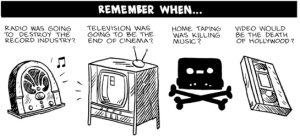I’m attending a NESTA Manufacturing HotTopic event in London in January which questions ‘will personal manufacturing be as disruptive to the manufacturing industry as the internet has been to media companies?’
You’ll see interested parties make statements like this;
“I think that within 10 years private individuals will be able to make for themselves virtually any manufactured product that is today sold by industry. I sometimes wonder if politicians realise that the entire basis of the human economy is about to undergo the biggest change since the invention of money.” Adrian Bowyer
As time progresses I’m questioning the extent to which fabrication will actually become personal. As Emily Campbell RSA rightly asks:
‘On the vaunted revolutionary potential of 3-D printers, I wonder what 3-D things we’ll need in such volume and with such regularity, but with such a low design threshold, that we’d want one on our kitchen counter or even at the cornershop like a photocopier… The value to craftspeople and hobbyists is self-evident; it’s the ordinary domestic scenario I’m less convinced by.’
Obviously I’m conscious of that Ken Olson proclaimation in 1977 that ‘[t]here is no reason anyone would want a computer in their home,’ which is often used in defense of personal fabrication. But really, what is the case for personal manufacture? What product do we need manufactured of such frequency to justify personal manufacturing (in the home)?
Some suggest food is the killer app. Personally I don’t want to eat anything that can be printed on a 3D printer. Perhaps though distribution is the point, maybe personal manufacture isn’t about personal manufacture so much as a new distribution channel? Goodbye FedEX?
ʻ… we believe in a future where Data is the design product, and where products are distributed in the same way that images and music travel through the internet today.ʼJanne Kyttanen, FOC
In anycase some suggest 2011 is going to be the year of the 3D printer. We’ll see. I’m not so sure, it has got to cross the chasm and what is the tipping point for mainstream diffusion? Sure we’ll have more makers, pro ams, hobbiests (lead user typologies) invest in the technology, perhaps we’ll sell the kit as we sell microscope kits as gifts; or to schools for DT classes, but not for average joe to make things for his home just yet.
I think the question for NESTA should be ‘will democratised manufacture be as disruptive to the manufacturing industry as the internet has been to media companies? By this I mean to look at organisations such as Fab Labs, Ponoko, Shapeways that enable and support everyman, crafts persons, designers and SMEs in manufacturing. This flattening, democratising and broadening of the manufacturing industry is the point.


Pingback: Tweets that mention Chasing unicorns, personal fabrication? | The HighWire -- Topsy.com
I agree. There is great naivety in a lot of the thoughts expressed about personnel fabrication. The chasm is deep and those who wish to cross it do not seem to be aware of its existence.
Pingback: It isn’t about the tool. 3D printing: An epitaph of sorts. | The HighWire
Pingback: 21st Century Manufacture – The RSA | The HighWire